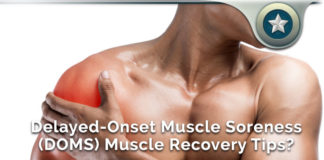Daily life comes with a decent amount of wear and tear, and it is common to hear people complaining of various aches and pains.
Many people complain specifically of pain in the lower back region. A weak psoas muscle is one of the most common risk factors for low back pain.
The psoas muscle, also known as the iliopsoas, plays a crucial role in the body. The muscle has various functions such as providing support to the back when one is in the postural position.
The muscle connects the lumbar spine to the lower body. When the muscle is weak, it means the back will lack enough support to perform its normal functions.
As a result, the affected individual will complain of back pain and neck pain. A healthy psoas muscle is required for a pain-free body.
The Importance of the Psoas Muscle
The back has two different psoas muscles that are located on both sides. They are the psoas major and psoas minor.
Just as the names suggest, the psoas major is the larger one and the psoas minor is the smaller of the two. Psoas is a Greek word that means loin region.
The psoas muscles form a V-shape from their origins in the rib cage proceeding down the femur.
The origin of the psoas major is at the spine, in an area around the bottom of the rib cage. The muscle proceeds down to the thigh along the femur. The psoas major is responsible for flexion of the hip.
The psoas minor has the same origin as the psoas major. It then runs down the bony pelvis, and it acts by flexing the spine.
The two muscles are necessary for various daily activities such as walking and running. The performance and health of this back muscle can be improved by doing exercises such as Pilates.
Most individuals who are gymnasts, weightlifters, and triathletes rely on the psoas muscles for support.
The psoas major and iliacus form what is known as the iliopsoas group. They help in providing stability and support to the lower back. The psoas minor plays more important roles in a four-legged animal than in humans.
Why The Back Requires A Healthy Psoas Muscle
A healthy psoas muscle is needed to perform daily activities. A weak muscle, on the other hand, is linked to various back problems such as sway back.
The muscle is also an important messenger of the central nervous system. Different conditions may arise when the psoas muscle has a defect.
Psoas syndrome and iliopsoas tendonitis may be observed when there are muscle imbalances in the body.
Both ailments are associated with pain in the hip region. Psoas syndrome involves a stretch, tear, or rupture of the tendon or iliopsoas muscle.
Iliopsoas tendonitis refers to an inflammation of the muscle. Another type of ailment is known as piriformis syndrome. It also presents with pain in the hip region.
According to Danielle Prohom Olson, who is a yoga therapist, the psoas muscle is the “muscle of the soul.”
According to the therapist, the psoas muscle plays a role in the respiration process because it is connected to the diaphragm via the connective tissue or fascia.
She also explains that the psoas muscle has an effect on the fear reflex. Liz Koch, an expert of the psoas muscle, explains that lack of emotional support or an emotional trauma could lead to a contracted psoas muscle.
Signs And Symptoms Of A Defect In The Psoas Muscle
- The affected individual will complain of discomfort, pain, and aches originating at the front hip socket.
- There will be a restriction of movement at the hip socket.
- There will be an inflammation in the muscle, also known as iliopsoas bursitis or tendinitis.
- The patient will encounter a restriction in moving the thigh backward.
- One will also complain of pelvic pain that originates from both sides of the pelvis.
- Others include a twisted pelvis, chronic constipation, and a deep bellyache.
Risk Factors Of A Weak Psoas Muscle
The two major causative factors of a weak psoas muscle involve sitting whole days and having bad posture.
According to the National Association of Sports Medicine, sitting the entire day without standing up is strongly linked to a weak psoas muscle.
As a result of sitting for long periods, the iliopsoas, psoas, and rectus femoris will be in a shortened position for a long time.
As a result, the muscle will be tight and overactive. At the attachment to the pelvis and lumbar spine, the compressed position will result in a forward tilt of the pelvis. There will be a weakness in the gluteal muscles.
A bad posture, both in a sitting and standing position, can also result in a weak psoas muscle.
A forward head posture weakens the support of the muscle over time because the body constantly works against gravity.
Benefits of a Healthy Psoas Muscle
1. It minimizes the risk of lower back pain
According to a publication in the Journal of the American Osteopathic Association, the psoas muscle is linked to the core muscle development process.
A 48-year old patient with back pain experienced improvement after the physician put him through an osteopathic manipulative treatment.
The procedure can be used for diagnosis, treatment, and prevention of illnesses and injuries.
It involves moving the muscles and joints using stretching techniques, gentle pressure, and resistance.
2. It impacts sports activities
As already mentioned, the psoas muscle plays a significant role in running or walking. When the knee lifts up, it results in contraction of the psoas muscle.
When the knee swings back to its original position, the psoas muscle lengthens. It is reported that a runner will contract and lengthen the psoas muscle 5,000 times during a run lasting one hour.
The psoas muscle in combination with other muscles, such as the abdominal muscle, works to provide support and a stable posture.
3. It minimizes pain during pregnancy
During pregnancy, there is a shift in gravity. The center of gravity will likely move forward with the development of the baby.
As a result, the pelvis will move forward towards the front of the body. The impact of these activities includes tightening of the muscles in the lower back region.
The gluteal and hamstrings will also stretch out and weaken. The pregnant mother will experience pain in the lower back and abdomen because the ligaments become attached to the uterus and this gives them a lot of stress.
Performing stretches and exercises that are aimed at strengthening the psoas muscle can help to minimize the pain.
Psoas Stretches And Exercises
- Foam rolling: The National Association of Sports Medicine suggests foam rolling tight muscles such as hip adductors. However, it is contraindicated in individuals having conditions such as bursitis, aneurysms, blood clots, and malignancies.
- Hip Flexor Stretch (Thomas Stretch): This is performed by kneeling down on one knee while keeping the front leg at a 90-degree angle.
- Leg lifts: One is supposed to lie on their back and extend the legs in front. The hands can be placed underneath the bottom of the back or above the head. The left leg should be lifted several inches above the ground and held for about five seconds. Lower the left leg and repeat with the right.
- Ball Bridge: The ball bridge exercise is aimed at strengthening the gluteal muscles that are commonly associated with a tight psoas.
Psoas Muscle Review Summary
The psoas muscle is located close to various internal organs in the abdominal cavity. The muscle links the spine to the lower region of the body.
The psoas muscle runs alongside other hip muscles and can become tight and overactive as a result of sitting for long periods.
A physical therapist or a chiropractor is required to release the psoas muscle. The patient can perform foam rolling of other muscles such as the abductor muscles at home to strengthen the gluteal muscles.









